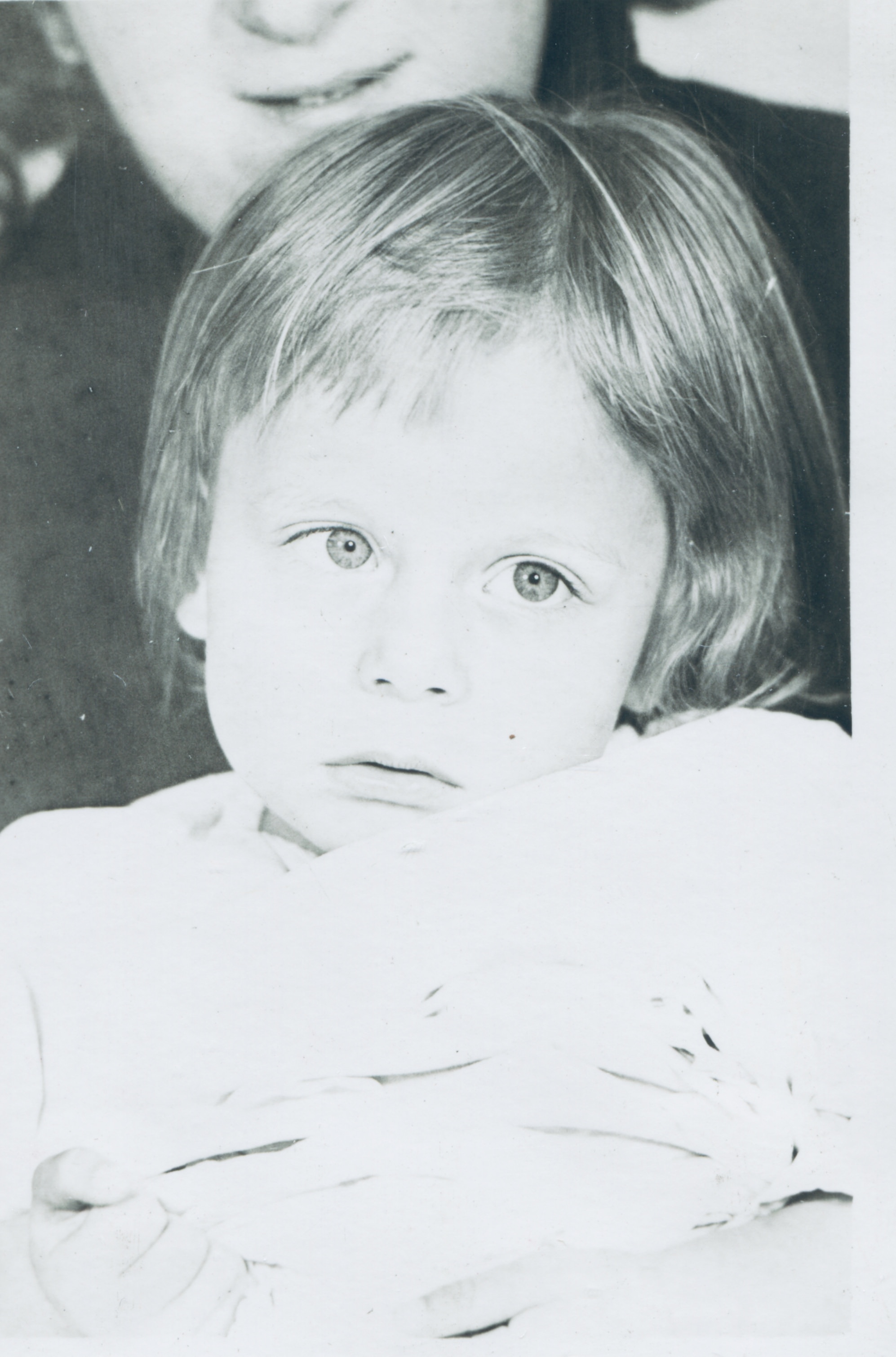Search for Names, Places and Biographies
Already layed Stumbling Stones
Suche
Rudolf Meyer * 1939
Ausschläger Allee 16 (Hamburg-Mitte, Rothenburgsort)
HIER WOHNTE
RUDOLF MEYER
JG. 1939
EINGEWIESEN 1942
ALSTERDORFER ANSTALTEN
"VERLEGT" 1943
HEILANSTALT KALMENHOF
ERMORDET 9.9.1943
Rudolf Meyer, born on 31 Mar. 1939 in Hamburg, murdered on 9 Sept. 1943 in the "Kalmenhof sanatorium and nursing home” ("Heil- und Pflegeanstalt Kalmenhof”) near Idstein
Ausschläger Allee 16 (Ausschläger Allee 32)
"In terms of his nature, he is calm, mostly lying in bed quietly. If someone wants to spend time with him, he is quick to scream. What he likes to do most is holding both hands in front of his eyes or playing with some item by himself. He can sit but not stand upright.” The sentences above described the inhibited development of three-year-old Rudolf Meyer after a three-month stay in what was then the Alsterdorf Asylum (Alsterdorfer Anstalten). After this, he had only one and a half more years to live.
Rudolf was born as the youngest of five children of the married couple Max and Erika Meyer, née Buse, in Hamburg. The two older sisters were six and eight years old. One of his two brothers died shortly before Rudolf’s birth, the other one soon thereafter. Rudolf’s birth went off without any complications, and his early development resembled that of his healthy siblings. He nursed well, sat upright at the age of seven months, and was able to walk with two years, though he did not speak. When he began refusing any food except for candy at one and a half years of age, his mother started having doubts about his health. However, she attributed his deficiencies to her own temporary symptoms of paralysis during pregnancy. It is no longer possible to establish the time Rudolf’s odyssey through hospitals and mental homes started, because the medical files are missing. In the summer of 1941, at any rate, he was in the Rothenburgsort Children’s Hospital. When an explosive bomb hit the building on 30 June and the institution had to stop operating, he was transferred along with 80 other children to the Altona Children’s Hospital. At that time, the diagnosis was "debility,” a mild degree of "feeblemindedness.” After ten days, he was discharged, probably to go home.
Four months later, Erika Meyer took her son to the "Psychiatric and Mental Hospital of the Hamburg Hansische University” ("Psychiatrische und Nervenklinik der Hansischen Universität Hamburg”) in Friedrichsberg. By then, her husband "served” in the German Navy. The National Socialist People’s Welfare authority (Nationalsozialistische Volkswohlfahrt – NSV) "sent away” Erika Meyer with her two daughters from Hamburg, which was threatened by air raids, but we do not know where.
If someone engaged Rudolf intensively, he would laugh. His eating habits had not yet changed. He ate only zwieback with sugar and spat out fruit or vegetables. He resisted medical exams so vehemently that none could be carried out. With the diagnosis of "imbecility,” a medium-degree defect of intelligence, he was admitted to what was then the Alsterdorf Asylum (Alsterdorfer Anstalten) on 12 Nov. 1941. There it was confirmed that he had no physical disabilities but that he did not develop psychologically according to his age. On the initiative of the Hamburg public health department and with consent from the mother, Rudolf Meyer was transferred for observation to the "children’s special ward” ("Kinderfachabteilung”) of the "Langenhorn sanatorium and nursing home” ("Heil- und Pflegeanstalt Langenhorn”), an institution of the "Reich Committee [for the Scientific Registering of Serious Hereditary and Congenital Illnesses]” ("Reichsausschuss [zur wissenschaftlichen Erfassung von erb- und anlagebedingten schweren Leiden]”), see below for further details, which made recommendations for observation and, if applicable, for killing. Rudolf was admitted there on 2 Mar. 1942. It was not possible to establish who had reported him to the "Reich Committee.”
After a difficult settling-in period, he reacted increasingly friendly to nursing staff in Langenhorn, playing with other children. He also began pulling himself up straight on the bars of his bed. Either the head of department, Fritz Knigge, assessed him as "unsuitable for treatment,” or the mother made the decision to take her child out of the hospital for reasons unknown to us; at any rate, after four months of observation, she took him back home. Since she could not cope with caring for him, the regional youth welfare office placed him in the children’s home on Feuerbachstrasse and arranged for his repeated transfer to "Alsterdorf” due to a hopeless prognosis for his educational development. "As a special exception,” the medical director, Prof. Dr. Gerhard Schäfer, admitted him there a second time on 3 Oct. 1942.
In Aug. 1943, when "room was made” in Alsterdorf by means of transferring occupants, Rudolf Meyer was relocated on the first transport on 6 August to the "Kalmenhof sanatorium and nursing home” ("Heil- und Pflegeanstalt Kalmenhof”) in Idstein/Taunus. He was murdered there on 9 Sept. 1943. The institution, formerly progressive in pedagogical terms, had been converted into a killing center important both to the T4 "euthanasia” operation and to the "Reich Committee.”
Translator: Erwin Fink
Kindly supported by the Hermann Reemtsma Stiftung, Hamburg.
Stand: October 2017
© Hildegard Thevs
Quellen: Ev. Stiftung Alsterdorf, Archiv, V 68; StaH 213-12 Staatsanwaltschaft OLG NSG, 0013/001ff., 0017/001; 333-3/1 Feuerwehr, B 5-1, Band 2; 352-8/7 Staatskrankenanstalt Langenhorn, Abl. 2000/01 (8); Jenner, Meldebögen; Wunder, Abtransporte; ders., Exodus. E-Mail von Thomas Brinkmann, AKK, vom 3.7.2010.


